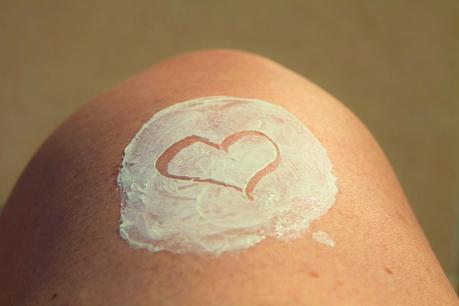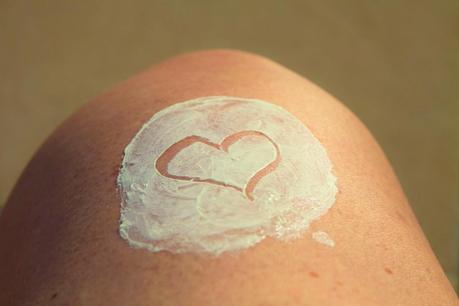Summer or winters, our skin is prone to sun damage, and we must protect it at all costs. Everyone knows about sunscreen and the damage that the UV rays do to our skin. Overexposure to the sun can cause freckles, fine lines, wrinkles, sunburn, and skin cancer. Sometimes just applying sunscreen is not enough for your skin. To help you with what other steps can give added protection from the sun, here are seven ways that work towards it.


1. Layer Up
Layer up means the skincare products that you apply on the skin must have an SPF 30 minimum in it. So the primer, foundation, moisturizer, spot corrector, or blush. The layering of sun-protected products on skin implies that skin gets enough coverage and protection against the sun. When you apply just a sunscreen, you may not end up reapplying or using it in enough depth. Applying multiple SPF products will make sure that you get enough thickness, and you apply it on your neck, ears, and eyelids too. Apply your sunscreen after you moisturize your skin and any treatment products. Remember the simple rule of cleansing, medicate, moisturize, and protect. There are two types of sunscreens physical sunscreen ad chemical sunscreen. Physical sunscreens consist of mineral ingredients which are not bulletproof but give better sun protection. Whereas chemical sunscreens contain ingredients like octinoxate, oxybenzone, and octisalate that release infrared rays after absorbing UV rays. Make sure to reapply sunscreen every two hours. In case you have makeup on and unable to wash face then use a powdered sunscreen, and you are good to go.
2. Protect Your Eyes
The signs of aging first show up around your eyes, also known as crow's feet. The skin around your eyes is very delicate and needs extra protection. Wear sunglasses whenever you are out. It will protect the eye and the skin around your eye from early signs of aging caused by the sun. Sunglasses with wide lenses and frames which are enough to cover the skin around eyes are the best options to wear. Opt for polarized lenses and with a clear label of 99 percent sun protection. Do not wear sunglasses with mirrors as they can bounce back the UV rays to your skin. If you wear contacts, make sure that you choose the ones that protect against UV rays, i.e., class I and class II contacts. Class I contacts are the best for UV protection.
3. Wear Sun-Protective Clothing
Every clothing you wear protects against the sun's harmful rays. Sun-protective clothes are special garments that carry ultraviolet protection factors(UPF) that help in filtering out the ultraviolet rays. Just like how the SPF in sunscreen ranges from 15 to 50+, there is a UPF range for clothing. A clothing item with UPF of 50 means it filters 98% of the UV rays. Use and style these UPF clothing along with your regular clothing to get a chic look. You can get creative by pairing the long-sleeves with a wide-brimmed hat. It will prevent sun damage of your scalp and ears too. Also, dark or bright colored UPF clothing protects better against UV rays as they absorb the UV rays instead of allowing them to penetrate through the clothes. You can quickly check a fabric's sun protection ability by holding it against the light. If you can see through it, then UV rays can easily penetrate and reach your skin.
4. Moisturize Your Lips
Most often, lips are left out from the conversations of anti-aging. Ignoring your lips can cause lip lines, sunburns, and pre-cancers on lips too. Lips have thin skin, and they do not have melanin to protect them from the UV rays. Apply a lip balm with SPF and reapply every few hours. Use a lip balm with broad-spectrum coverage. Such lip balms protect against both UVA rays and UVB rays. Apply sun-protective lip balm at least 30 minutes before going out in the sun. If you are going swimming, then apply and reapply every two hours.


5. Cover Your Head-with a Hat
Staying indoors is the easiest way to avoid sun damage on your hair and scalp. But since that is not practical, wearing a hat is the simplest thing to do. Remember to wear a hat or carry a scarf that covers your head whenever you go out. Try to walk under shades provided by the trees. If you braid your hair and your scalp exposes itself, you can apply sunscreen there. Your sunscreen must not be oily, must have UVA and UVB protection. Avoid going out in the sun between 10 AM to 4 PM when the sun rays are maximum. Wearing a bun or a ponytail are easy hairstyles that cover your scalp and protects from the sun.
6. Nutrition and edible sunscreen
For the exterior protection of your skin, UPF clothing and sunscreen will do the job. Other than these, certain foods also protect our skin from sun damage. Diet high in saturated fats like cheese, butter, foods rich in omega-3 like nuts, seeds, and tomatoes, green tea, watermelon, asparagus, and chocolate promote skin protection. Whereas processed and sugary foods damage the skin with sun exposure. Include antioxidants in your diet like cauliflower, carrots, blueberries, which also shield our skin from sun damage. In addition to having nutritious foods, you can also opt for heliocare pills which is an oral sun protection system.
7. Avoid Reflective Surfaces
Water, sand, and snow are reflective surfaces that reflect sun rays up to 85% and have a higher risk of causing sun damage. Your skin can quickly burn when around these reflective surfaces. If avoiding these places is inevitable, then make sure to apply sunscreen on every body part that stays exposed to the sun. Avoid going out in the sun between 10 AM to 4 PM. To avoid overexposure in the sun, go out in the early morning or late afternoon.
Conclusion:
Skin is your body's largest organ, and you have to take care of it. The above tips will help you in protecting your skin from the harmful rays of the sun. Dermatological treatments, skin surgeries are expensive to go for it now and then. Instead, investing in a good sunscreen with SPF above 30 will keep your skin healthy, youthful, and delays the early signs of aging. Your sunscreen must have UVA and UVB protection.
